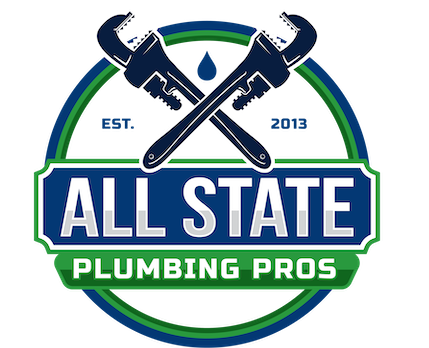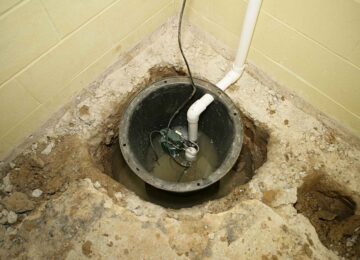Plumbing systems depend on pipes to carry clean water into the home and safely remove wastewater. Choosing the right water plumbing pipe is essential when building, remodeling, or repairing a property, since the right choice ensures a system that is safe, efficient, and long-lasting.
The best pipe depends on several factors, such as whether it will handle hot or cold water, its location (indoors, outdoors, or underground), and local building codes that regulate which materials are approved. For example, copper and PEX are common in water supply lines, while PVC and ABS are often used in drain and sewer systems.
By understanding the strengths, weaknesses, and proper applications of each pipe type, homeowners can make better decisions, prevent costly plumbing issues, and ensure their systems operate smoothly for decades.
Types of Pipes
Metal Pipes
Metal pipes have been used in plumbing for decades and remain a common choice for water supply lines. They are known for their durability, resistance to high water pressure, and ability to withstand high temperatures. However, not all metal pipes are equally reliable, and older materials like lead or galvanized steel present health and maintenance concerns.
- Copper Pipes: Copper is one of the most trusted plumbing pipe materials. It resists corrosion, tolerates hot water, and lasts 50–70 years when installed properly. Because it doesn’t leach chemicals into water, copper is considered one of the safest choices for drinking water. Its main drawback is cost, as copper is more expensive than plastic alternatives.
- Galvanized Steel Pipes: Common in homes built before the 1960s, galvanized steel was once popular but is prone to rust, corrosion, and mineral buildup that restricts water flow. Many older homes still contain galvanized steel, but most plumbers recommend replacing it with copper or PEX to avoid leaks and potential lead exposure.
- Cast Iron Pipes: Strong and heavy, cast iron is mostly used in sewer lines because it can handle large volumes of wastewater and reduces noise. However, it corrodes over time and is rarely installed in new residential plumbing.
Metal pipes remain valuable in specific applications, particularly where durability and high-temperature resistance are required.
Plastic Pipes
Plastic pipes are now the most common choice in residential plumbing systems because they are lightweight, easy to install, and resistant to corrosion. They are also less expensive than copper and widely approved under local building codes for both new construction and remodels.
- PEX Pipes (Cross-Linked Polyethylene): PEX has become the standard for water supply lines in new homes. Its flexibility allows plumbers to run long lengths without fittings, reducing leak risks. It’s highly resistant to freezing and works well for both hot and cold water. One potential drawback is that it can’t be used outdoors, as UV rays degrade the material.
- PVC Pipes (Polyvinyl Chloride): PVC is widely used for drain, waste, and vent pipes. It is lightweight, easy to cut, and inexpensive. However, standard PVC is not suitable for hot water lines, as it softens under high temperatures.
- CPVC Pipes (Chlorinated PVC): An upgraded version of PVC, CPVC can handle hot water supply lines and is approved for potable water use. It resists corrosion but is more expensive than standard PVC.
- ABS Pipes (Acrylonitrile Butadiene Styrene): ABS looks similar to PVC but is typically black. It is durable and effective for drainage and venting, but can degrade with prolonged sunlight exposure.
Plastic pipes are versatile, safe for potable water (when marked), and generally easier for homeowners to maintain.
Pipe Applications
Different types of pipes are designed for different parts of the plumbing system. Choosing incorrectly can lead to leaks, water damage, or health concerns.
- Water Supply Lines: These carry drinking water into the home. Copper and PEX are the most common choices because they resist corrosion and maintain water quality.
- Drain Pipes: These carry wastewater out of sinks, tubs, and toilets. PVC and ABS are widely used because they are durable, inexpensive, and easy to replace.
- Sewer Pipes: These pipes transport wastewater to municipal systems or septic tanks. Cast iron and concrete are commonly used because they can handle high volumes and resist crushing under soil pressure.
Correctly matching the pipe type to the application ensures both safety and efficiency.
Choosing the Right Pipe
Deciding which water plumbing pipe to install involves more than material preference. Factors like cost, water quality, climate, and building regulations all play a role.
- Application and Location: Pipes for hot water must withstand higher temperatures, while outdoor pipes need to handle soil pressure and freezing cycles.
- Local Building Codes: Some states restrict certain plastics or require copper for potable water. Always check with local code enforcement before making a choice.
- Health and Environmental Impact: Older materials like lead pipes are dangerous, as they leach toxins into drinking water. Some plastics may leach chemicals if not properly certified for potable water. Copper, PEX, and CPVC are generally considered safe.
- Longevity and Maintenance: Copper can last 50 years or more, while PEX is expected to last around 40–50 years. PVC and ABS are durable but best suited for drainage systems.
When in doubt, consulting with a professional plumber ensures compliance with codes and helps balance cost, safety, and durability.
Pipe Materials
Each material used in plumbing pipes has unique qualities.
- Copper: Durable, safe for drinking water, resists corrosion, but expensive.
- PEX (Cross-Linked Polyethylene): Flexible, freeze-resistant, ideal for hot and cold water, but not UV-resistant.
- PVC (Polyvinyl Chloride): Affordable, lightweight, corrosion-resistant, but unsuitable for hot water.
- CPVC (Chlorinated PVC): Handles hot water, potable water-safe, more costly than PVC.
- Galvanized Steel: Strong but outdated, prone to rust, and may leach lead into water.
- Cast Iron: Heavy, long-lasting for drains/sewers, but corrodes over time.
This comparison highlights why modern plumbing tends to favor copper, PEX, and PVC/CPVC for most residential applications.
Pipe Installation
Pipe installation requires careful planning and adherence to code. Mistakes can compromise water quality and create leaks that are costly to repair.
Professional plumbers begin by mapping the water supply and drainage routes, then selecting pipe sizes and fittings appropriate for the home’s needs. During installation, joints must be sealed with approved lead-free materials to ensure drinking water safety. Once installed, pipes are pressure-tested to confirm no leaks exist.
DIY installation is possible for simple PVC drain repairs, but installing or replacing water supply lines should generally be left to licensed plumbers. Local regulations often require permits and inspections, ensuring systems meet health and safety standards.
Conclusion
Selecting the right water plumbing pipe requires balancing safety, cost, durability, and compliance with local building codes. While copper and PEX remain the top choices for supply lines, PVC and ABS dominate drainage systems. By understanding pipe materials, applications, and installation practices, homeowners can make informed decisions that protect their homes for decades.
If you’re unsure which water plumbing pipe is right for your home or want expert installation that meets local codes, it’s best to call a professional. At All State Plumbing Pros, our licensed team helps homeowners and businesses across Connecticut and New York choose and install the safest, most durable pipes. Whether you’re upgrading old lines or need emergency plumbing repairs, contact us today for fast, reliable service you can trust.
FAQs
How to find where a water pipe is leaking?
The easiest way to check for a leak is to shut off all fixtures and observe your water meter. If the meter continues to move, there may be a hidden leak. Professional plumbers use tools like acoustic leak detectors and thermal imaging to pinpoint leaks accurately.
What are the three types of plumbing pipes?
The three main categories are metal pipes (copper, galvanized steel, cast iron), plastic pipes (PEX, PVC, CPVC, ABS), and concrete or clay pipes for sewer systems. Each type has specific applications depending on durability, cost, and water safety.
How to find a leak in an underground water pipe?
Signs of an underground leak include damp patches in the yard, unexplained high water bills, and reduced water pressure. Plumbers use acoustic listening devices, soil probes, and tracer gas detection to locate leaks without unnecessary excavation.
What is the name of the pipe for underground water?
Pipes used for underground water lines are typically PEX, copper, or PVC/CPVC, depending on local code. For sewer lines, cast iron or concrete pipes are common. The choice depends on water use, soil conditions, and regulatory requirements.

![Choosing the Right Water Plumbing Pipe: Homeowner’s Guide Plumbing systems depend on pipes to carry clean water into the home and safely remove wastewater. Choosing the right water plumbing pipe is essential when building, remodeling, or repairing a property, since the right choice ensures a system that is safe, efficient, and long-lasting. The best pipe depends on several factors, such as whether it […]](https://allstateplumbingct.com/wp-content/uploads/2025/09/water-plumbing-pipe-750x420.jpg)



Leave a Reply